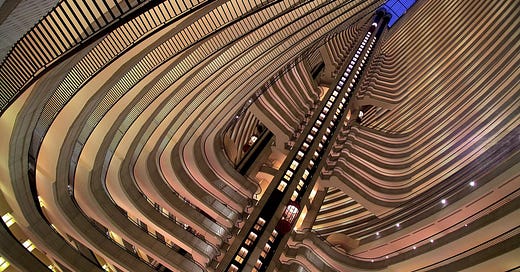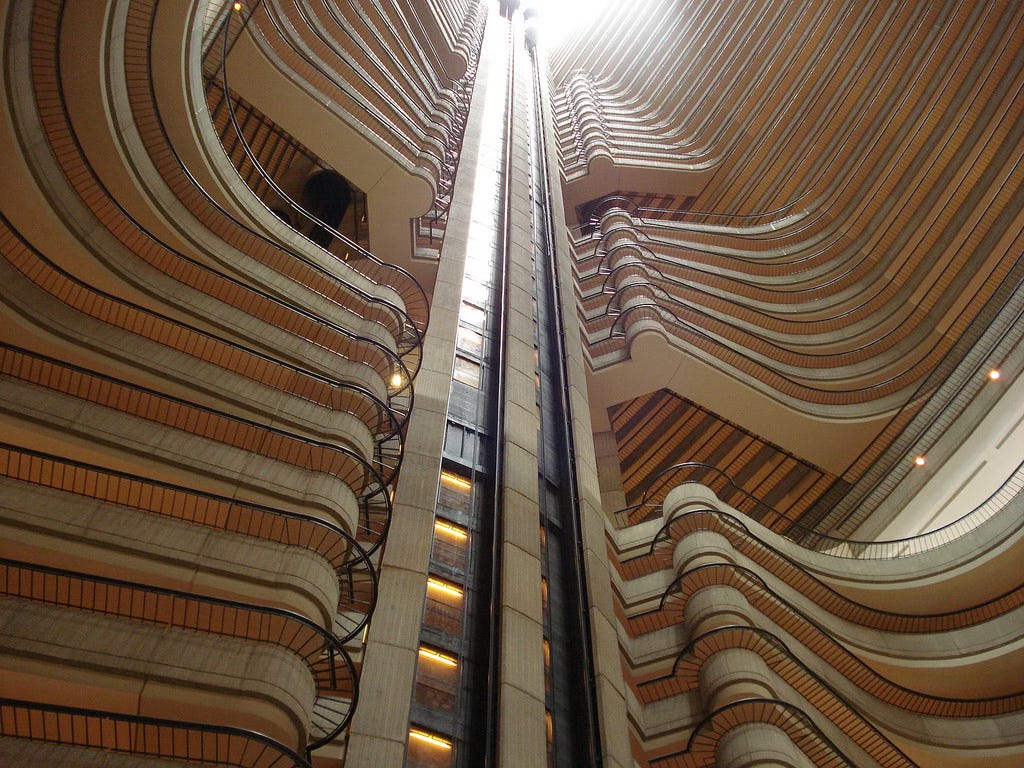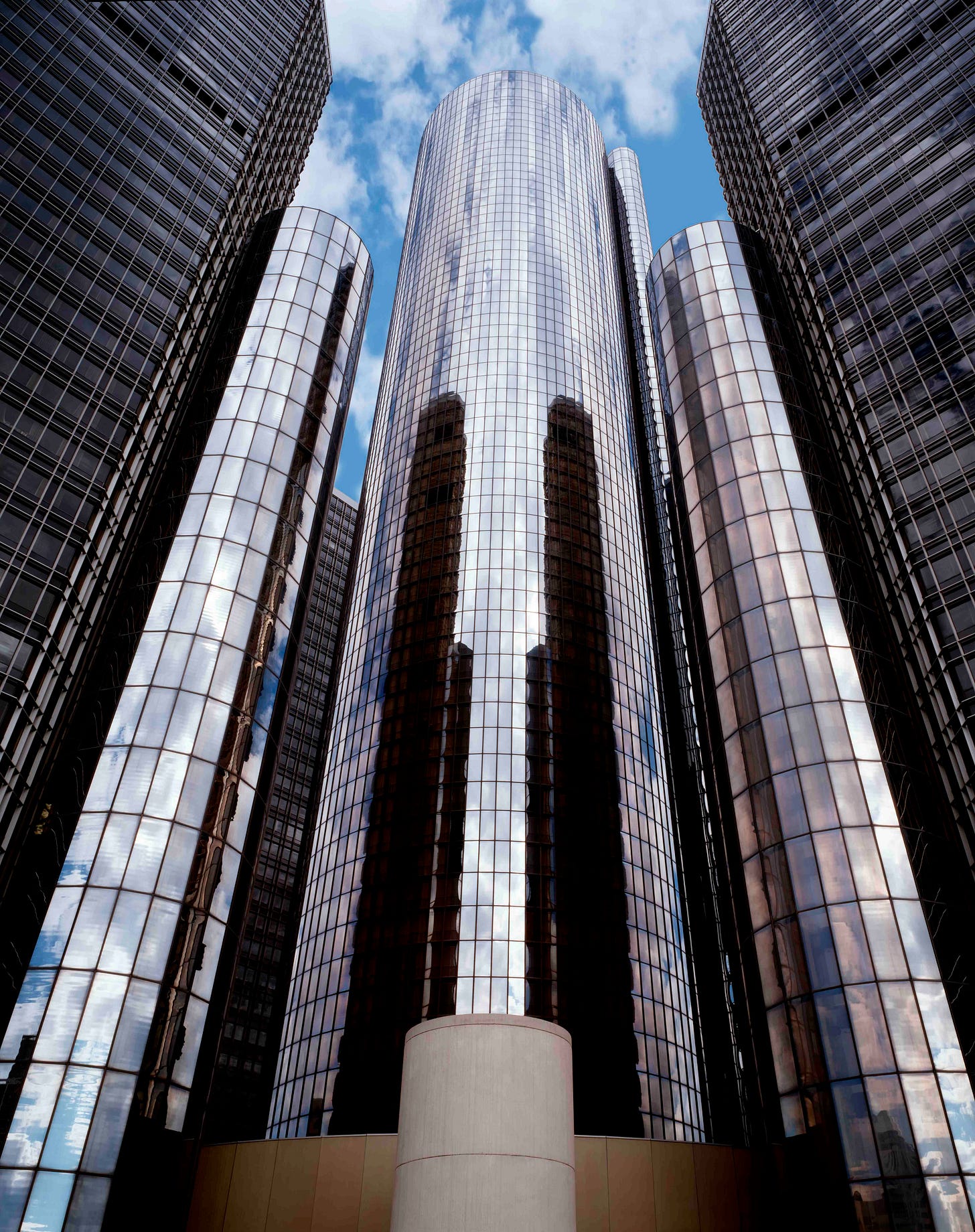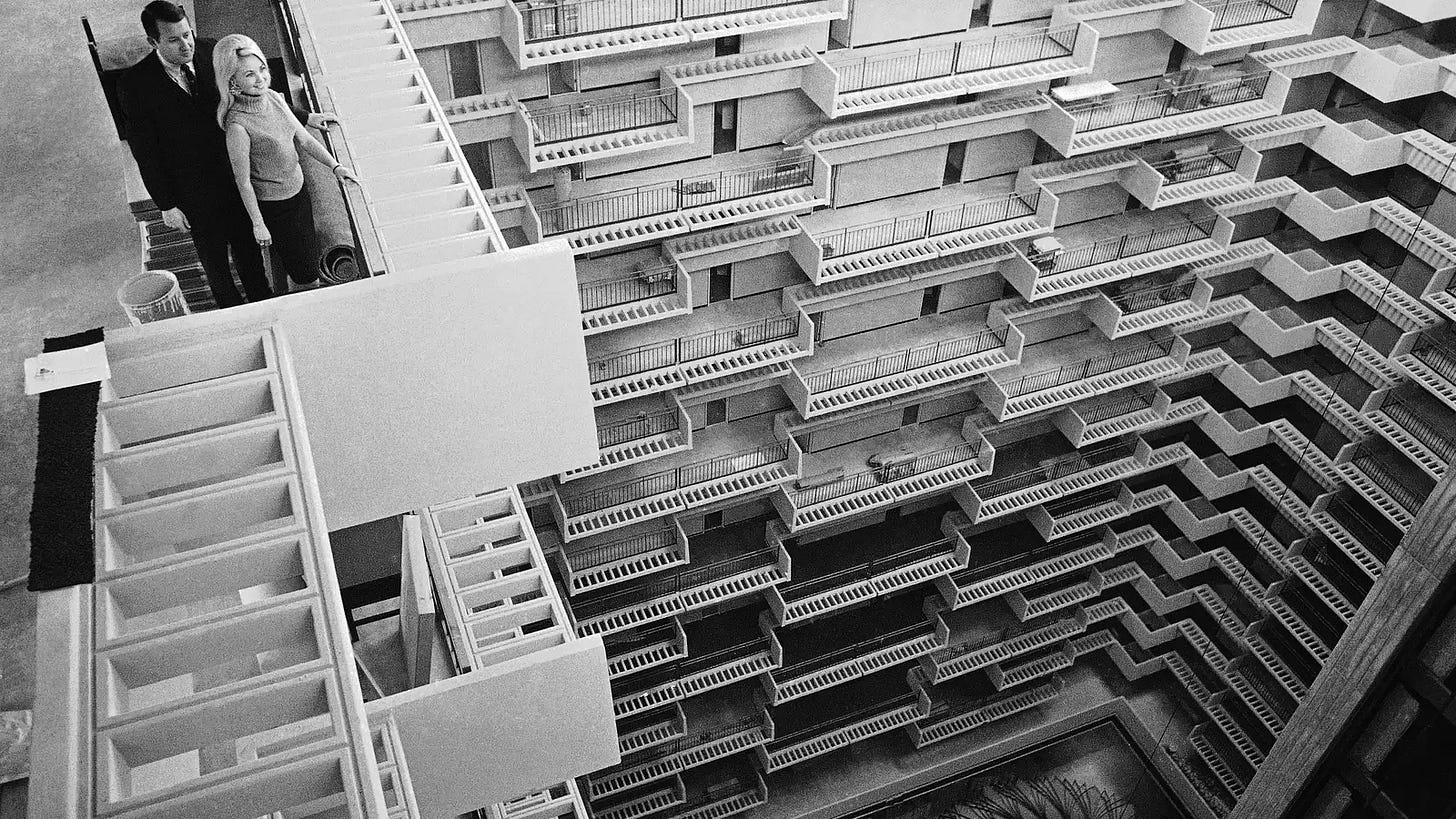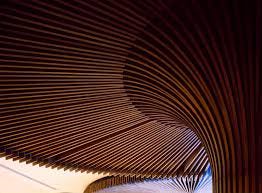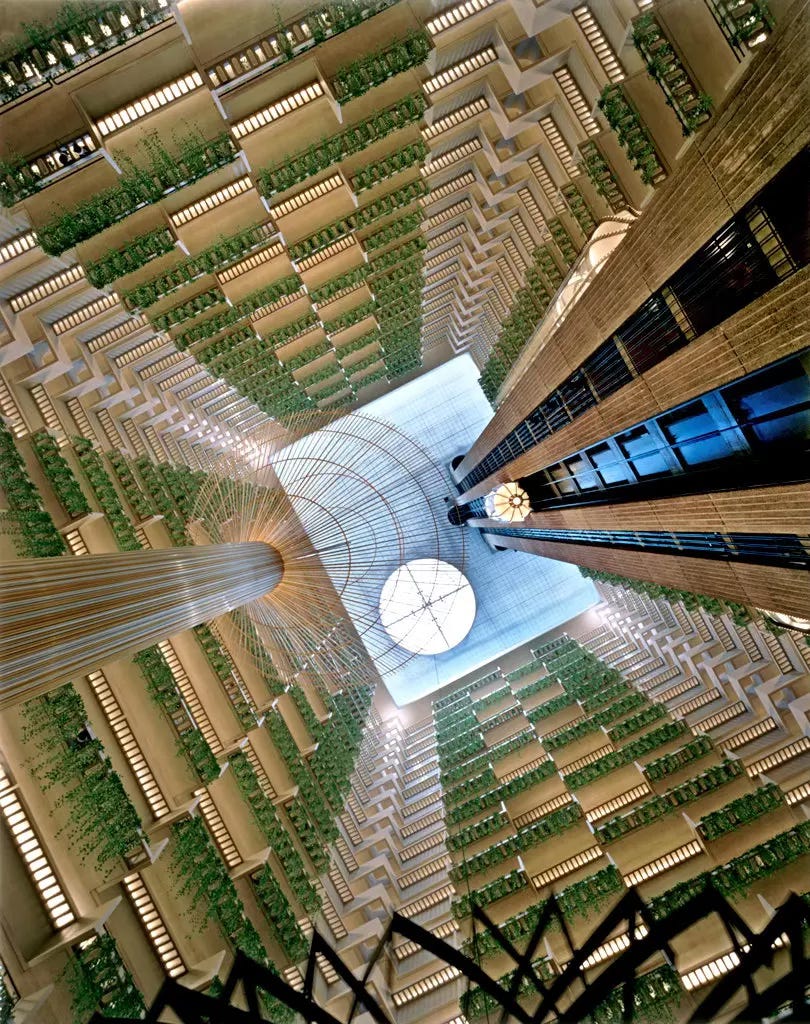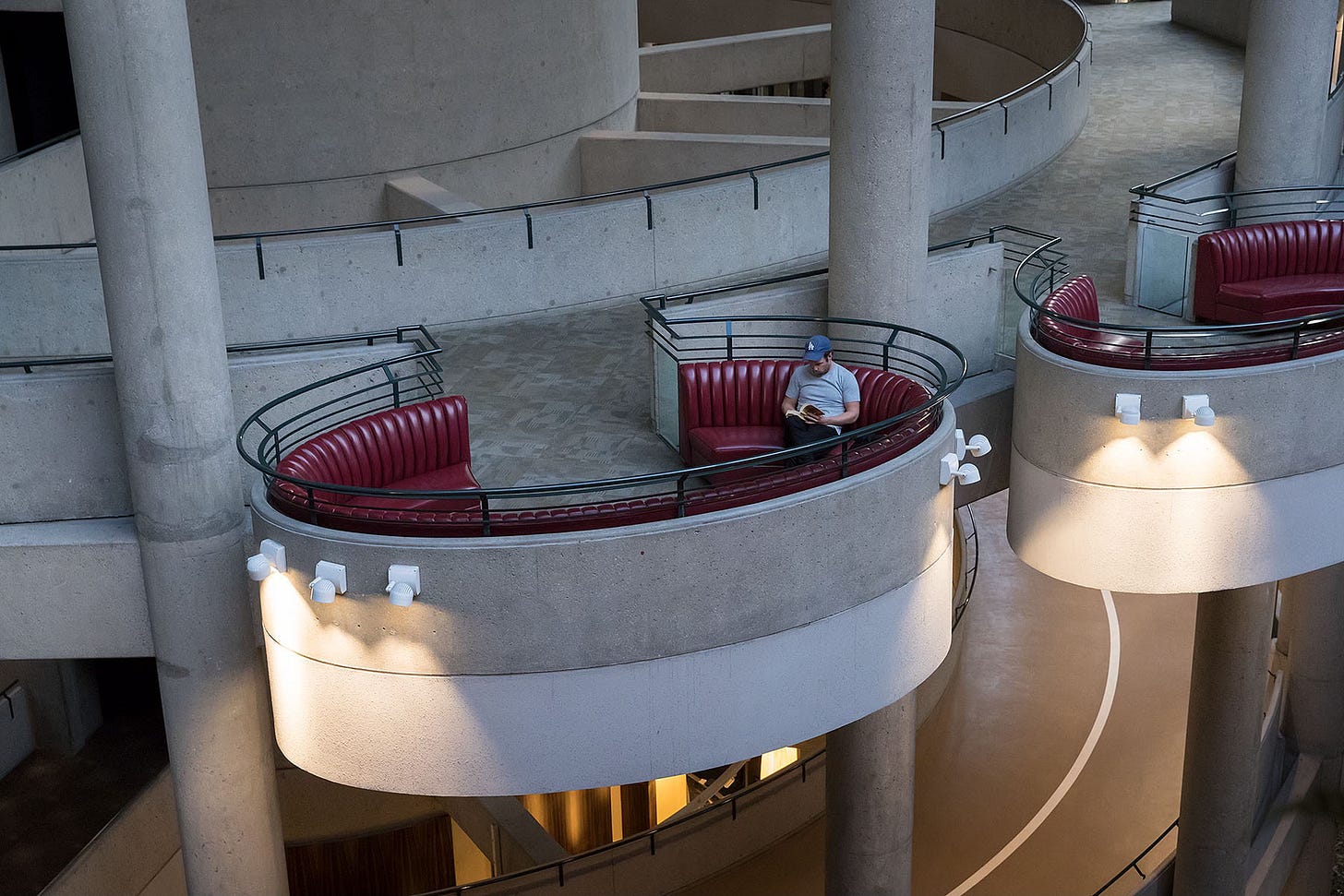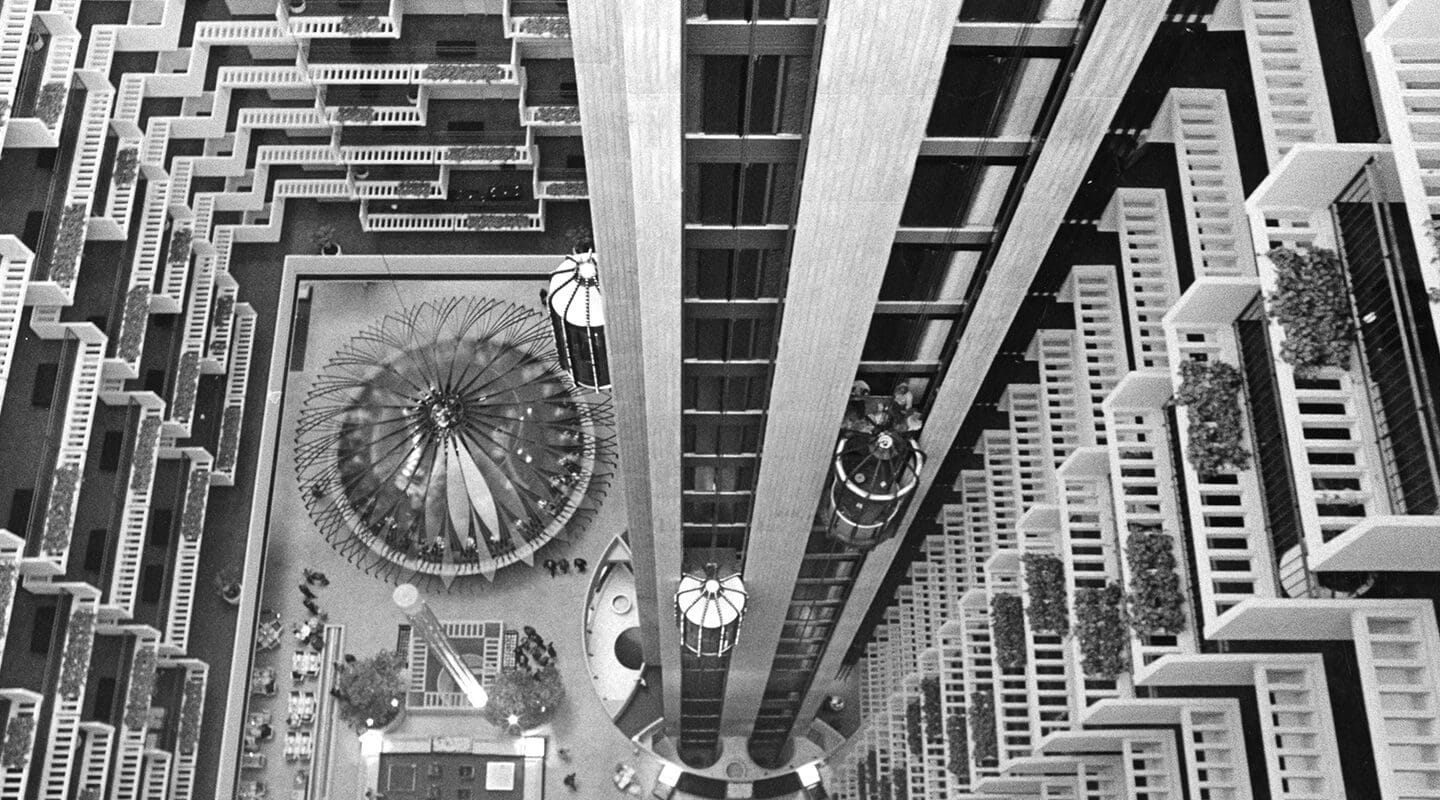The Da Vinci from Atlanta
The anti starchitects at Portman have done the future, they’re now looking at something more interesting – people.
A few years ago I interviewed Jack Portman who died in 2020. His dad was equally famous and he continued that incredible legacy - I love the work so deeply, so I added photos of both of their lives’ work here. And here is my story from back then:
The smiley architect Jack Portman leans in and quietly shares a simple thought about lines, space and the deeper feelings they aroused. And as you spend more time with Portman, who is now the Vice Chairman of Portman Holdings and son of the visionary architect, John Portman, these are the golden nuggets of beauty that he reveals. Not just architecturally, but a little something that touches on our very humanity.
The ability to look at the world, and its desire to be designed, and to pair it with something mortal is something that seems to flow through the Portman family chain. In fact, John Portman, dubbed a “neofuturist architect” and “ahead of his time,” has created some of the most engrossing and unique buildings in the world – in the 70s before it was cool; thanks to all the starchitects overexposing right about now.
“It was suggested to him (John) by one of his high school teachers that he might find Mechanical Drawing to be an interesting course to take,” shares Jack Portman. “He followed this teacher's advice, enrolled in that class, and sure enough, he had a passion for it and that was the beginning of his architectural odyssey.” What a tiny step for a man from Walhalla, South Carolina and such a vault over for architecture and design.
And so over almost 50 years the firm, now a major player in China, transformed Atlanta and then spread their “cinematic” interiors all over the world from Shanghai to Los Angeles. “Portman buildings contain dramatic spaces, kinetic movement of objects with the energy of all the people within those spaces…this makes them interesting places,” adds Jack Portman. But although the firm’s cosmos are major iconoclastic masterpieces - featured in an inexhaustible list of films like “The Hunger Games,” “Flight”, “True Lies,” and “In The Line Of Fire” – the real heart is something more simple, people.
“Architecture is a form of art and science, a product of subjective ideas and objective law of physics,” says Luca Maffey, Principal and Vice President of Design at John Portman & Associates. “Advancements in technology allow architects to place their design in a complete flow with human beings and nature while artistic innovative ideas are always trying to resonate with people's sensibility. It is evident that the only common denominator that defines architecture through time is People.”
And that’s why John Portman held people at the center of his ideas: “architecture is about people, it helps define the life they live.” Maffey adds, “John Portman & Associates today understands that the American people are slowly rediscovering their cities and the value that they bring to social relations, environment, and historical identity of any particular location. We design around these people focusing on their renewed sense of community and collaboration as an inspiration.”
And with that in mind, Portman has designed for the Jin Jiang Group and redid the Waldorf Astoria hotel on the Bund in Puxi. Giving the hotel and surroundings a whole new lease on life. Now, just a little wangle down the river is where their next project is waiting. Ba Dai Tou (BDT), which is designing and participating as a development partner with the Zhongwei Group in the Yangpu District, is about to give back a large part of the gorgeous river in Shanghai to its deserving people.
“Though we currently own two blocks, comprising a built-up area of approximately 500,000 m², BDT is a mixed use urban design master plan proposal comprising nine city blocks which we have presented to the Yangpu District government,” says Jack Portman. “The nine block plan is a concept used to illustrate to the government the benefits of coordinating with one Master developer when revitalizing key segments of the city rather than just selling off each plot of land to a separate developer and thereby having potentially an uncoordinated urban plan.” And so the project had three housing buildings that finished by the end of 2017 – combining the new way of living: office, retail, shopping and, of course, entertainment.
This new way of living is exactly what has happened to architecture, for decades it was about privacy and creating finicky dedicated spaces. The way we live now, with a giant desire for more, is to embrace life as one big activity where we play and work in an integrated manner. Peachtree Center and the Hyatt Regency Hotel in Atlanta are perfect examples of the previous way of doing things – where life was more internal, not as inclusive of the environment surrounding.
“This project began in the mid-60s at a time when the urban core of American cities was fleeing to the suburbs. No one was looking to live downtown anymore and consequently with no residential population the demand for retail space to windowed considerably and as new malls were opened in the suburbs retail and shopping also left for downtown,” says Jack Portman. “Today the health of these American cities (Atlanta, San Francisco, Los Angeles) is much more vibrant, much more community driven with a lot of residential in which millennials have changed the tone of what an urban environment can be. The millennials are not interested in cars or commutes; they want to live and work and play living in a higher density area which has walkability, accessibility and facilitates the ease of social interaction.”
“American people are coming back to rediscover the importance of the public spaces, including sidewalks and plazas of their cities, we are opening our projects towards them to respond to their renewed desire to connect with other people,” adds Maffey. “Coda (a $400 million mixed-use development around ‘tech-square’ in Atlanta) is a clear example of how the once typical Portman urban interior is now unlocked to open a dialogue with the new millennial generation, more preoccupied to engage with an interlocutor than to worry about a stranger on the sidewalk.”
“Our projects in China are based on different factors since the climate; the culture and the density are very different than the one in the US,” says Maffey. “However the street life is always part of our design and often we continue the public sidewalks into the project site to continue the public space using it as a focal point of our design in welcoming people into our project.” Think of something like the Shanghai Centre as a village in the middle of the urban setting which constitutes a “new way of interpreting the public space.”
But Asia has always been Portman's other muse. “During the summers of my college years I was able to travel, to live, to work, and to study in various places around the world,” says Jack Portman. “On a trip through Asia I encountered Hong Kong and it was there, from the moment that I arrived, that I was determined to eventually live there. While working on projects in Egypt and in Saudi Arabia and Pakistan, I eventually went back through Asia and decided at that time that Asia was a preferable market for Portman's future.” And so they made sure to strategize on this brand new market, hungry for fresh interest, and thus their first project in the east - The Regent Hotel in Singapore.
After setting up a Hong Kong arm of operations they set their sights on mainland China with a thorough study of the Chinese market which focused highly on Guangzhou, Beijing and Shanghai. “It was determined that Shanghai would be the place for Portman to begin and became the place where we built the Portman Shanghai Centre, the first foreign, non-Chinese, developed real estate project in China,” says Jack Portman. Today they have bestowed their work to dozens of Chinese cities and have a standing in buildings from Shenzhen, Ningbo, Wenzhou, Hangzhou, Suzhou, Shanghai, Beijing, Jinan, to Yinchuan with projects either under construction or in design.
However for John Portman it wasn’t only about architecture at all – there are paintings, sculptures, designed furniture, lighting and even jewelry. “Architecture is about design and how to manifest that design into reality,” says Jack Portman. “One could say that the mentality of design, the brain waves which spark the idea, in the sensitivity and capability to articulate that design is a fundamental process.”
“My father is a developer, a property manager, a promoter, an appetizer and a commercial expert,” says Jack Portman. “It's difficult to put this in the context which doesn't seem egregiously overreaching but in terms of design, art, philosophy and commerce, he is an equivalent, a 21st-century equivalent of Leonardo da Vinci. This is a subject which could be right for a book and which would draw as much admiration as it would criticism.”
He’s worth celebrating and lauding. So I brought an old back to life.
“When my father was a student at Georgia Tech, the legendary Frank Lloyd Wright came to visit the school and my father had the unique opportunity to share a few words with Mr. Wright. Obviously there are scores and scores of people standing in line to have their moment with the famous architect and what Mr. Wright said to my father was, "The answer young man lies in Emerson. Look at Emerson and be guided by his words!”

